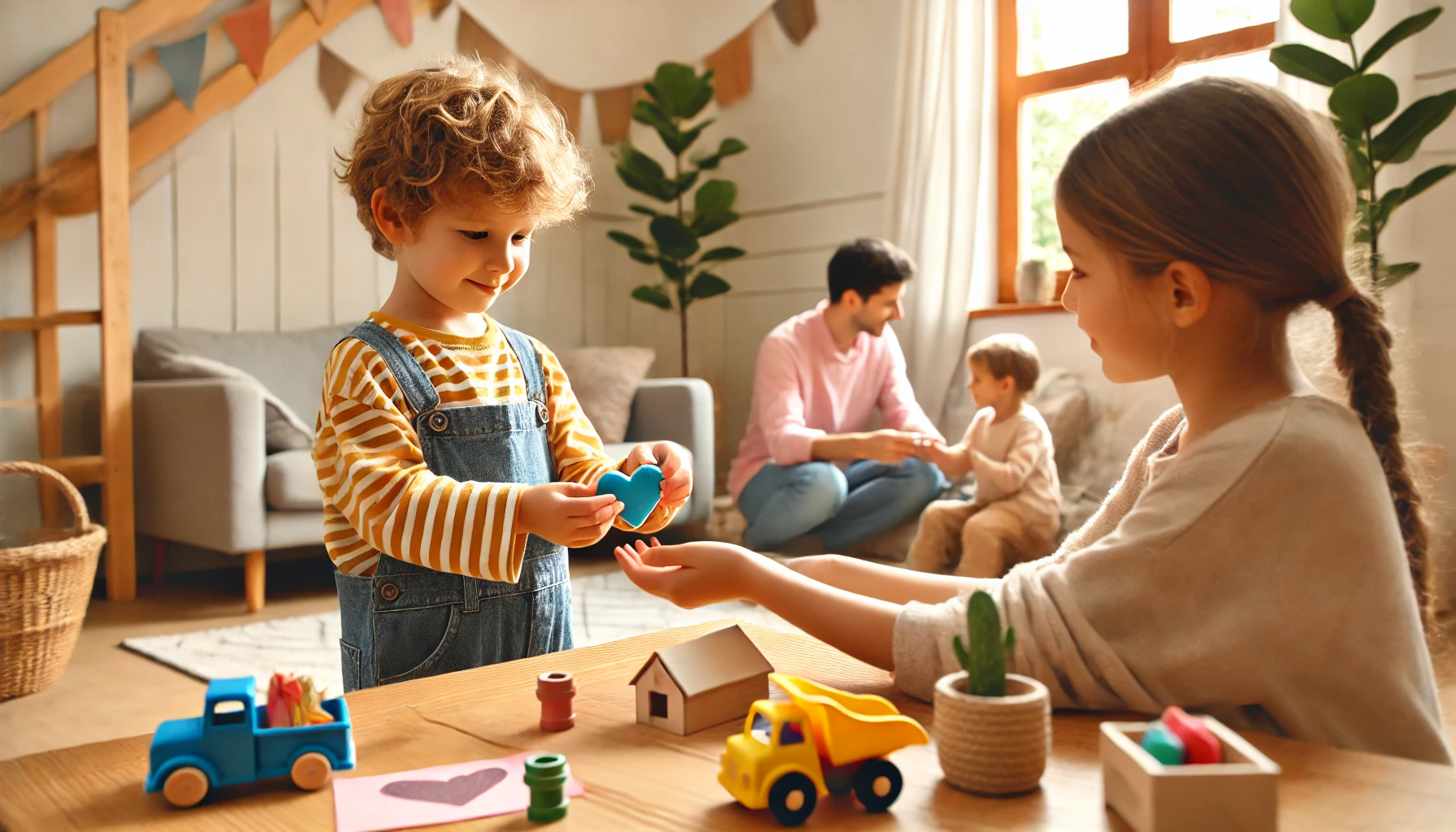How to Teach Young Children About Kindness in Daily Life
Kindness is a fundamental value that helps children build positive relationships, develop empathy, and create a more compassionate world. Teaching young children to be kind through daily actions, role-modeling, and storytelling encourages them to treat others with respect and generosity. In this article, we’ll explore practical ways to nurture kindness in young children’s everyday lives.
Why Teaching Kindness is Important
- Encourages empathy and emotional intelligence – Helps children understand and respond to others’ feelings.
- Builds strong friendships – Promotes positive social interactions.
- Creates a more positive environment – Fosters a culture of respect and inclusion.
- Improves self-esteem and happiness – Acts of kindness boost emotional well-being.
- Teaches responsibility and cooperation – Encourages teamwork and helping others.
1. Model Kindness in Everyday Life
Children learn kindness by observing how adults treat others.
Activity Idea:
- Use polite words like “please,” “thank you,” and “excuse me” in daily conversations.
- Show appreciation for small gestures: “That was very kind of you to help your friend.”
- Demonstrate acts of kindness, such as holding the door open or helping a neighbor.
What Kids Learn:
- The impact of kind actions on others
- How to express gratitude and politeness
- That kindness is a normal part of daily life
2. Encourage Random Acts of Kindness
Small, unexpected gestures help children see that kindness can happen anytime.
Activity Idea:
- Make a kindness jar where children draw random acts to complete (e.g., “Give someone a compliment,” “Help clean up”).
- Encourage sharing with siblings or friends.
- Write and deliver small thank-you notes to family members or teachers.
What Kids Learn:
- The joy of giving without expecting anything in return
- How small acts of kindness make a big difference
- How to be thoughtful toward others
3. Read Books That Teach Kindness
Stories help children connect with characters and understand the importance of kindness.
Activity Idea:
- Read books like Be Kind by Pat Zietlow Miller or Have You Filled a Bucket Today? by Carol McCloud.
- Pause and ask, “How did the character show kindness?”
- Discuss ways to apply the story’s message in real life.
What Kids Learn:
- How kindness affects others emotionally
- Different ways to show kindness
- The importance of compassion and inclusion
4. Teach the Power of Words
Words have the power to uplift or hurt, so teaching children kind communication is essential.
Activity Idea:
- Play a kind words game where kids replace negative phrases with positive ones.
- Teach phrases like “That was a great idea!” instead of “That’s not good.”
- Remind them to speak to others the way they would like to be spoken to.
What Kids Learn:
- The effect words have on emotions
- How to encourage and support others
- That kindness includes speaking respectfully
5. Role-Play Kindness Scenarios
Practicing kind actions in pretend situations helps children understand social interactions.
Activity Idea:
- Role-play helping a friend who is sad and discuss what to say.
- Act out sharing toys or taking turns.
- Pretend a new student is joining their class and practice welcoming them kindly.
What Kids Learn:
- How to react with kindness in different situations
- The importance of comforting and including others
- Social skills for positive interactions
6. Encourage Helping at Home
Assigning small tasks fosters a sense of kindness and teamwork.
Activity Idea:
- Let children help with setting the table, folding laundry, or feeding a pet.
- Praise acts of helpfulness: “That was so kind of you to help your brother clean up!”
- Create a family kindness challenge where everyone does at least one helpful thing per day.
What Kids Learn:
- That helping others feels good
- The value of teamwork and contribution
- How kindness strengthens family relationships
7. Teach Kindness Toward Animals and Nature
Being kind isn’t just about people—it extends to animals and the environment.
Activity Idea:
- Encourage gentle handling of pets and caring for their needs.
- Teach the importance of not littering and keeping nature clean.
- Involve children in simple gardening activities to teach respect for nature.
What Kids Learn:
- That kindness applies to all living things
- How to care for animals with love and responsibility
- The importance of protecting the environment
8. Praise and Reinforce Kind Behavior
Recognizing and celebrating acts of kindness encourages children to continue being compassionate.
Activity Idea:
- Say, “I love how kind you were when you helped your friend today!”
- Keep a “kindness calendar” where kids track daily kind actions.
- Encourage self-reflection by asking, “How did it feel to be kind today?”
What Kids Learn:
- That kindness is appreciated and valued
- How to reflect on their own actions
- That being kind makes everyone feel good
Final Thoughts
Teaching young children about kindness in daily life helps them develop empathy, strong relationships, and a positive outlook. By modeling kindness, encouraging acts of generosity, and reinforcing kind behaviors, parents can raise compassionate children who make the world a better place.
